I still remember the moment I fell for Korean hornbeams. Boon had brought several to a BIB meeting when they were in fall color. Some were covered in yellows and greens – another shone orange and red. The trees were vigorous, healthy, dense, and beautiful – I set my sights on getting one.
A few years later I did. Turns out, great fall color is an occasional treat where I live – this year I got brown.

Korean hornbeam – December 4, 2010
Once most of the leaves on the tree turn brown, it’s time to remove them. This is true of all deciduous varieties. The sooner I can expose the interior buds to the light, the better.
The process of removing old leaves varies a bit from variety to variety. Hornbeam leaves release easily when they are pulled away from the end of the shoot. As I work, I’m careful to not wrap the petiole around the bud as this will strip away bud and leaf together.
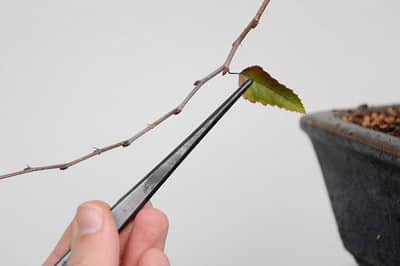
Pulling the leaf back, away from the end of the shoot
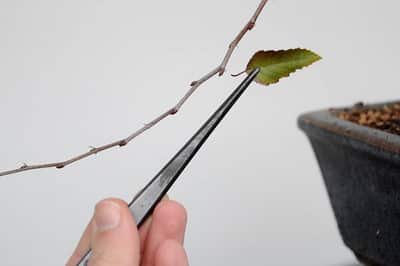
Leaf removed
With the leaves gone, I can get a better sense of how the tree is developing. More than any other deciduous variety I’ve worked with, hornbeam ramify well with little prompting. A few days after removing the leaves, I brought the tree to a workshop to see about the cutback.
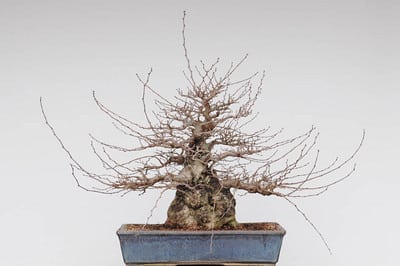
After removing the leaves – many new shoots appeared this year
Boon thought the tree might be full enough for show, so he took his time with the cutback. I hadn’t planned on showing the tree for some time, but as I have very poor alternatives this year, this tree may have to do.
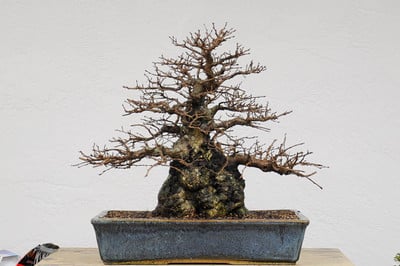
After cutback
I planted the tree in an oversize pot last winter expressly for the purpose of letting it grow for several years. If the tree does make it to show this year, I’ll need to repot it in a more appropriately sized container.
It will be an interesting exercise to match the tree with a pot. I have a few candidates that should provide nice balance for the large trunk, but I won’t know for sure until I give them a try.
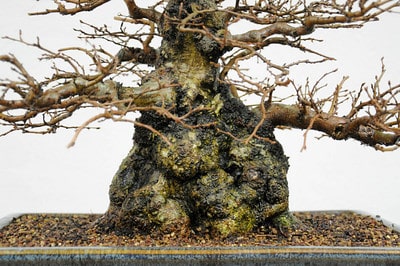
Trunk detail
Even if I do show the tree this year, my sights will remain on a target much farther out. Hornbeam look their best when they are covered with fine foliage. This tree has a long way to go – fortunately, getting there will be the fun part.
Subscribe to Bonsai Tonight
New Posts Delivered Every Tuesday and Friday
Mike Pollock says
Great post, great tree.
My korean hornbeams seem to like annual repotting when they get ramified enough that leaf size is a goal. Do you find this too?
xwires says
Thanks Mike – I’ve found that I can repot hornbeam less than most other deciduous trees. Frequent repottings do keep growth in check, but when I get more growth, I can cut back more frequently and speed the development of the tree. Of course, I may need to slow things down in another 10 years when the tree is better ramified – we’ll see. Thanks for the note.
Christian says
Hi Jonas,
Wonderful tree! Here inthe woods on the East Coast I have to mainly deal with deciduous species and hornbeams are one of my favs. Is this tree an import or was that awesome trunk grown out by Boon or someone there?
Chris
xwires says
Chris – I think this is a collected, imported tree. At some point I’ll post some pics of what it looked like when I acquired it. Thanks for the note!